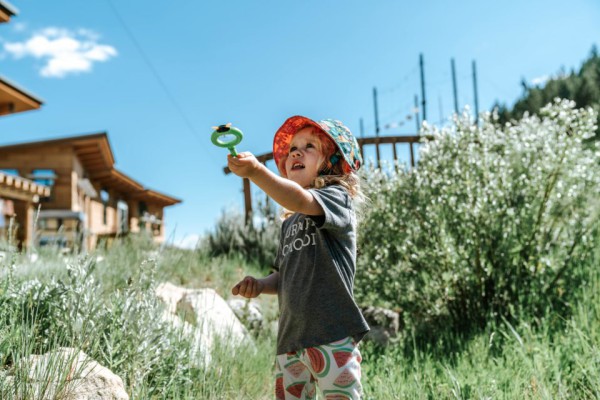Age Range & Audience: This activity is great for any age, especially upper elementary school students. It can be done together or alone. A few modifications and extensions are offered below.
Materials: Natural or human-made object, journal and pencil (optional), hand-lens (optional)
Lesson Overview: Explore the world with your senses! Make observations of the world around you! Making observations is the foundation for becoming a skilled naturalist and scientist. We are constantly making observations each and everyday, often without even acknowledging the process. What does it really mean to observe something though? How can we become better observers? Use the following practice to dive deep into observing one thing and increase your curiosity for the world around you. This can be done anywhere with anyone.
Connections to:
Place-based Education Principles: Learner-centered, community as classroom, inquiry based
Cross Cutting Concepts in Next Generation Science Standards: Patterns
Social Emotional Learning: Relationship building, increased awareness and perspectives, empathy building, increased confidence
Learning Outcomes:
- Identify patterns to form observations, questions and connections.
- Engage with the first steps of the scientific process.
- Increase curiosity for aspects of the surrounding world.
Download the PDF Version of the Lesson
Lesson Activity:
What does it mean to “observe”? What do you think of when someone says “observe”? Imagine what it means to make careful observations. What does it involve? Making observations is both a sensory experience using your body and a thinking experience using your mindFind an object. Look around you and find some sort of object that is no larger than your hand. This can be something natural (rock, leaf, flower) or human-made if you can’t make it outside.
Use your senses to NOTICE. Start by holding your object in your hand. What do you notice?
- Close your eyes. What do you feel? Is it rough or smooth? Does it have a particular shape? Is it light or heavy? Say all of your observations about what you feel out loud with the phrase, “I
NOTICE….”. Be as specific as possible. (ex. “I notice on one side it feels pointy and the other side feels more round.”) - Hold your object up to your ear. Does it make a sound? What about if you shake it lightly? What kind of sound do you think it would make if it dropped to the ground? Continue to make
“I NOTICE….” statements aloud while thinking of sound. - Open your eyes. What do you see? Can you describe what your object looks like? Does it have color? What does it look like from different perspectives? Bring your object close to your eyes to see it up close. What do you notice? (If you have a hand lens, use it to examine your object at a micro-level.) Hold your object farther away. What do you notice? If you have a journal, feel free to draw your object in as much detail as you wish.
- Now hold your object closely and try smelling it. Does it have a particular scent? What does it smell like? Make your “I NOTICE….” statements aloud.
- If it is safe to do so (ask a parent first!), go ahead and taste your object. If you aren’t able to taste it, either skip to the next step or imagine what it would taste like. What do you notice?
Ask questions to WONDER. Now that you’ve explored your object with your senses, you are going to observe more with your mind. Reflect on all of the things you noticed about your object. Did this spark any questions you have about your object? Start to ask these questions out loud using the phrase, “I WONDER……”. You can also record these questions in your journal. (ex. Where did this object come from? Why are there green spots right here? Why does it float?)
Make connections to REMIND ME OF. At this point, you have made some strong observations using both your body and mind. Now, we are going to start making connections to other aspects of your life. Maybe your object reminds you of an experience you’ve had. Maybe it reminds you of something else you’ve seen before. Maybe it reminds you of a particular feeling or season. Think of all these connections that come to mind and say them out loud with the phrase, “IT REMINDS ME OF….”. (ex. The edges of this leaf remind me of the leaves on the tree I like to play on.)
Share what you observed! You now might feel more connected to the particular object you chose. If possible, find someone to share all of your unique observations with!
Reflections:
- Consider the following prompts as you reflect on on your observation experience (this can be done on your own or with someone else):
- What surprised you about making observations like this?
- What feelings arose?
- Why is it important to make careful observations?
- After observing one small object, how do you think you could use these same skills to observe a whole landscape?
- How can you use these observation skills everyday?
Age Adaptations:
Younger audiences: Start the observation process by making 2-3 “I notice…, I wonder…., It reminds me of…” statements.
Older audiences: Take your observations to the next level by recording them in your journal. Take time to draw your object from different perspectives. Pay special attention to color, scale, and shape and record as much detail as possible. How does recording what you notice in such detail add to your level of observation? How do you think this practice is used in the scientific community?
Extensions:
Observation Progressions: After completing this lesson, check out our Sit Spot Lesson for making in-depth observations.
Field Journaling: Using a field journal can be a powerful tool for making observations. The next time you head outside or
want to learn more about something, take a moment to draw it in your field journal with all of your observations.
Conducting Investigations: Now that you’ve practiced your observation skills, take it to the next level by designing and conducting your own science investigation!


